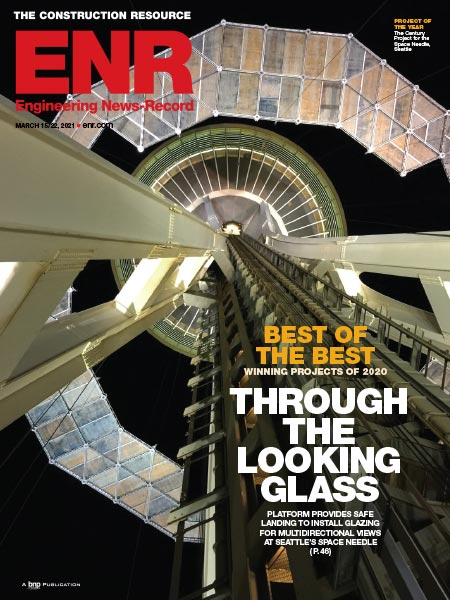Bringing Public Works Into The 21st-century
Some economists have argued a second round of economic stimulus spending should focus on public works projects.�However, others have suggested that it would take too long for the projects to actually begin for them to provide the quick increase in hiring and spending that is required for a speedy recovery.
The naysayers have a point if we’re talking about conventional projects, but I believe that’s not the case if we begin to apply a variety of Web 2.0 technologies that have become pervasive in other industries but have not been widely adopted in the public works field.
It’s time for what I call “Bridges 2.0,” reinventing the entire public works planning and construction process, and, in the process, drastically reducing costs (critical in light of the current fiscal crisis) and time to completion.
Last spring I had an opportunity to discuss this problem with Massachusetts Governor Deval Patrick, shortly before he announced a $3 billion bridge reconstruction bond project. Patrick complained state highway officials told him that it takes approximately 10 years from conception to completion for even a modest bridge reconstruction project. He jawboned them to reduce it to 5 years. I told the Governor I thought using Web 2.0 tools could cut that 5-year horizon significantly.

STEPHENSON
Looking at various steps in the process through the lens of Web 2.0 will show the relevance of these techniques - and, equally important, the attitude of collaboration they foster - to this issue, and the resulting benefits, ranging from cost-containment to cutting delays to building public confidence:
- Make permitting processes web-based:
- Use Web 2.0 tools for the public participation processes:
- Make the project staff accessible:
- Put videos of the bidders conferences on YouTube:
- Post all bills and payments on linee
- Coordinate the construction schedule by on-line calendars:
- Create RSS feeds to which the public, media, and all contractors can subscribe.
Some permits must be obtained sequentially, because beginning one is contingent on receiving an earlier one. However, if the processes are web-based and the contents have XML tags to categorize them, when a change is made in one permit application it can flow automatically to others, and, wherever possible, permits should be processed in parallel.
A Web 2.0-based public participation process would have many advantages: people wouldn't have to attend evening hearings to participate, but could submit YouTube videos or contribute to wikis that would allow for full discussion of the issues -- and might even uncover good ideas that should be considered.
The Transportation Security Administration has improved its public standing and actually gained valuable ideas from the public through a frank, conversational blog.
The District of Columbia now routinely does this for its major procurements. Not only can bidders repeatedly refer to the video to make certain they are responding accurately to what was said, but also the process’s transparency dramatically reduces the chance of costly and time-consuming legal challenges from losing bidders.
Posting all bills and payments to contractors on line will help build public confidence in the project and its transparency
The exquisite interdependency of contractors and sub-contractors in a bridge project can bring the entire process to a halt if even a single small subcontractor doesn't show up on time, inflating costs and delaying completion.
Making certain that all participants have access to the schedule and their role on a real-time basis will help remove those coordination problems. Allowing the public, officials, and the media to subscribe to the schedule would also increase accountability.
Skanska, the multi-national construction firm, has gained a competitive advantage by administering all of its projects, from sales to completion, using Microsoft's Sharepoint collaboration tool. They minimize email, post all construction documents, give clients access to information, and share a common calendar.
The feeds would automatically inform them of project milestones and/or delays, detours etc. on a real-time basis.
The District of Columbia, arguably the nation’s leading governmental entity in terms of creative use of Web 2.0 tools, not only enjoys quantifiable savings with a wide range of projects due to improved coordination, real-time information sharing, and encouraging employees to share ideas to improve processes, but the transparency resulting from "doing business in the public square" as city CTO Vivek Kundra says, is rebuilding public confidence after years of corruption.
Bringing public works into the 21st-century through Web 2.0 tools can do the same, potentially saving billions of dollars in delays, and building public confidence through continuous information flow and transparent administration.





